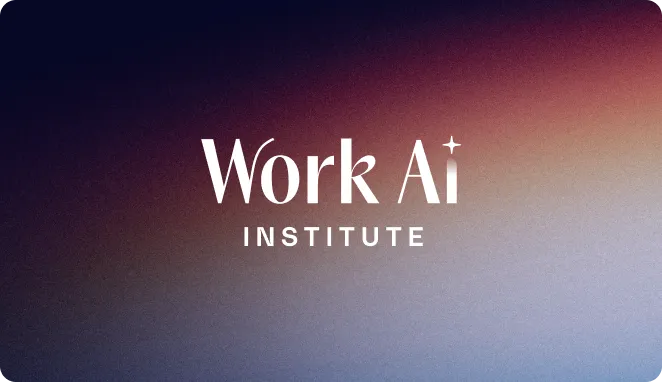- AI is transforming customer service by streamlining workflows, empowering agents at all levels, and reducing operational costs and agent burnout, which results in faster, more accurate, and efficient support experiences for both customers and teams.
- Effective AI integration in customer service depends on solutions that work seamlessly with existing tools, protect data privacy, support compliance, and provide transparency and control through features like audit logs and role-based permissions.
- When implemented thoughtfully, AI enables customer service teams to improve resolution times, minimize disruptive handoffs, and enhance both customer satisfaction and employee retention by bridging knowledge gaps and automating repetitive tasks.
Customer service teams are under unprecedented pressure to deliver fast, accurate answers across every channel. With over half of customers willing to switch brands after just one bad experience, modernizing support operations is no longer optional, but necessary. Yet, internal knowledge is often fragmented, agents are overloaded, and costs are rising, making change a difficult process. In the meantime, workflows suffer due to the increasing complexities of everyday work.
AI provides a powerful solution for these issues. It can streamline workflows, surface institutional knowledge, and empower agents without disrupting existing workflows and tools. This blog explores how AI is transforming how customer service teams work by shortening onboarding times, reducing burnout, and delivering measurable results in a world where efficient and effective results are more important than ever.
Why is AI needed for today’s customer service operations?
Customer service as a whole is experiencing a major shift, driven by growing demands and changing requirements. A key factor is the rising expectations of customers, who now anticipate constant, omnichannel support and instant, accurate responses. However, many customer service teams are under pressure to find ways to increase output without simply scaling headcount. Customer service is traditionally viewed as a cost center, not a revenue generator, leading to pressure during budget discussions. Many companies do not necessarily expand their support teams in line with sales team expansion, making it difficult to meet service level agreements (SLAs) as customer demands increase. These challenges often result in growing ticket backlogs and extended SLAs.
Additionally, frontline support agents frequently face difficulties quickly accessing the necessary information to resolve customer queries. When they can't find what they need promptly, these agents often escalate cases to more senior personnel, who may escalate to subject matter experts (SMEs) from outside the support department. These escalations not only delay resolution times, they also incur higher costs for the company. Furthermore, troubleshooting complex support issues often involves substantial time to gather and assess information before plotting a path forward. Although this process is crucial to resolve certain issues, it can significantly slow down resolution times while draining already limited support resources.
Training and development also pose significant challenges. The turnover rate for L1 call center agents averages 30-45% per year, meaning companies must continuously invest in onboarding new hires and bringing them up to speed. This training process not only consumes the time of senior support staff but can also feel fruitless, given the amount of time invested in training new hires who will soon be gone.
For all of these scenarios, AI can help deliver tailored, customized solutions that reduce manual effort, improve response quality, and give frontline teams real-time access to relevant information when they need it most.
AI-driven solutions for issue containment
Many customer service teams use a tiered support model to triage incoming issues. Frontline or Level 1 agents handle common inquiries, and pass on issues beyond their capabilities to more experienced, Level 2 support agents. Depending on the business, the layers could be few or many, but at some point, the prickliest problems need answers from people outside of the support team. In this model, containment is one of the best ways to improve efficiency.
AI can plug neatly into each level, providing support to help deflect tickets from moving up to the next stage. Fewer handoffs–and faster resolution times at every level–lead to increased customer satisfaction.
- Level 1: Empowering frontline agents
When knowledge is fragmented across various tools, even simple questions can lead to escalations. AI can empower Level 1 agents by providing immediate access to crucial information, such as relevant policies, summaries of previous cases, and contextual clues—especially useful for new agents. This shortens handling times, increases first-contact resolution (FCR), and boosts agent confidence by enabling swift and accurate answers.
- Level 2: Reducing senior staff workload
At Level 2, speed is paramount. AI tools can tag relevant content, automatically summarize issue histories, and suggest next steps. This allows experienced agents to make quicker, more informed decisions. Instead of spending time gathering context, they can focus on resolving the issue, keeping queues moving and enabling senior staff to prioritize their most critical tasks.
- Level 3: Minimizing disruptions for internal experts
Level 3 escalations frequently involve highly specialized and time-constrained teams, such as engineering, senior management, legal, or compliance. Many of these requests lack essential context or need to be passed along to the right person. AI can help prevent unnecessary escalations by equipping frontline and mid-tier agents with tools to search company knowledge and resolve a higher percentage of tickets. If a handoff truly is necessary, it can provide a neat handoff package with a summary of the ticket so far, relevant past cases, and recommended next steps. It can also help the support team correctly identify the expert best placed to advise on a particular issue, reducing time to response (TTR). This protects specialist bandwidth and ensures that truly urgent issues receive the attention they require.
When implemented thoughtfully, AI allows each level to operate optimally with fewer interruptions and clearer priorities. By integrating AI into customer service, companies can efficiently meet high expectations and maintain strong levels of customer satisfaction, while reducing internal turnover rates.
Minimizing disruption during AI implementation
When choosing an AI solution for support teams, customer service leaders should evaluate several critical factors.
The first is the availability of integrations into existing workflows. The most effective AI solutions integrate seamlessly with existing tools like Salesforce, Zendesk, and ServiceNow, avoiding workflow disruptions and preventing the introduction of new silos. These solutions should be capable of pulling information from systems of record—where institutional knowledge resides—and pushing insights back into the tools where the work gets done. Such integrations minimize disruption to agent productivity during a rollout, allowing agents to continue their work efficiently without needing to adapt to entirely new systems or processes.
Another consideration is compliance, particularly with regulatory standards such as CCPA, GDPR, and industry-specific requirements like HIPAA. AI solutions must support enterprise-grade privacy and data protection, which includes technical enforcement features such as data residency controls and consent management. Essential compliance features to look for include audit logs, data masking, and region-specific data residency to ensure that the organization's data protection efforts are robust and legally compliant.
AI solutions must also understand organizational hierarchies, permission levels, and data boundaries to tailor responses based on user authorization and context, ensuring sensitive information is protected and knowledge is surfaced responsibly. This role and permission-aware access is crucial for maintaining trust and control. Furthermore, transparency is key—customer service leaders need to have visibility into how AI-generated answers are created, their information sources, and decision-making processes. AI solutions should offer clear audit trails, content versioning, and explainability features, ensuring the AI operates within understandable and traceable parameters. Without this visibility, trust around AI solutions is hard to establish.
Even the best AI tools can underperform without the right support structure in place. It’s essential to look for solutions that have the right components like these in place that support growth and easy integration, while maintaining compliance, security, and privacy at scale.
With thoughtful implementation and proper team preparedness, AI can turn into a powerful force multiplier for service operations, enhancing overall efficiency and customer satisfaction.
Delivering exceptional customer experiences augmented by AI
By automating tasks, providing real-time information, and minimizing disruptions, AI empowers frontline teams to resolve issues more efficiently. Agents, alongside AI, can now deliver results at the speed customers desire.
Glean’s unified AI platform provides these solutions and more—speeding up time-to-resolution (TTR) by surfacing recommended next steps for open tickets, generating summaries for speedy handoffs, and drafting customer comms in seconds. By helping new hires tap into the expertise of everyone who came before them through a constantly updated index and personalized knowledge graph, it reduces time-to-value for new hires, freeing up time for senior staff and reducing frustration (and turnover) among low-level employees.
If you’re looking to learn more about Glean and get started with AI that makes a difference for both customers and customer service teams, request a free demo today!









